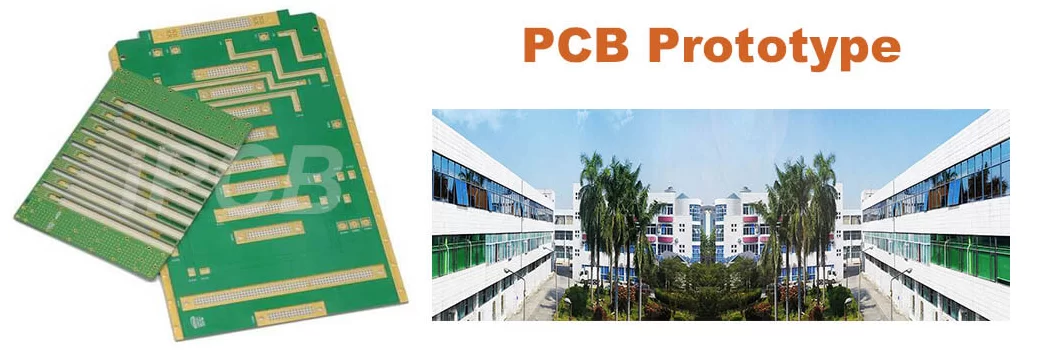Electronic prototype manufacturing is a crucial technology that not only accelerates the product development cycle but also enhances product reliability and market competitiveness. By rapidly manufacturing and testing electronic prototypes, engineers can identify and resolve potential issues before the product goes into mass production, saving time and costs.The process of electronic prototyping usually begins with PCB design. Engineers use specialized design software to create the layout and wiring diagram of the circuit board. These drawings determine the placement and connections of various components on the PCB. Once the design is complete, the drawings are converted into production files and sent to a PCB manufacturer for the actual fabrication of the circuit board.
In electronic prototype manufacturing, another critical step is the procurement and soldering of components. Based on the design drawings, engineers need to select appropriate components and solder them onto the PCB. This process requires a high degree of precision and expertise to ensure that each component is correctly installed and functions properly. Besides PCB fabrication and component installation, electronic prototyping also includes functional testing and validation. Using specialized testing equipment and software, engineers can simulate the actual usage scenarios of the product and measure the performance metrics of the circuit board. Any issues discovered during the testing process can be promptly corrected, thereby improving the quality and reliability of the final product.

Electronic prototype manufacturing
Electronic prototyping techniques are also evolving with the advancement of technology. For example, the application of 3D printing technology has made Electronic prototyping faster and more flexible. Through 3D printing, engineers can quickly produce complex circuit board structures and perform functional tests. This technology not only shortens the development cycle but also reduces production costs.
In electronic prototype manufacturing, collaboration and communication are equally important. Engineers need to work closely with professionals from various stages, from designers to manufacturers to testing engineers, ensuring seamless coordination at each step. Good communication and collaboration can improve work efficiency, reduce errors, and speed up the product development process. Electronic prototyping is also pivotal in the development of cutting-edge technologies, such as IoT devices, wearable technology, and smart home applications. These fields often require rapid iteration and testing to keep up with the fast-paced market demands. Prototyping allows developers to quickly create and test new concepts, ensuring they meet the desired functionality and user experience before committing to large-scale production.
One of the significant benefits of electronic prototyping is the ability to conduct thorough testing and debugging. During the prototyping phase, engineers can perform a variety of tests, including thermal, stress, and environmental testing, to ensure the prototype can withstand real-world conditions. This rigorous testing process helps identify potential failure points and allows for design adjustments, leading to a more robust final product. The use of advanced materials and manufacturing techniques is another area where electronic prototyping shines. For instance, flexible PCBs, which are crucial for wearable devices and other compact electronics, can be prototyped and tested to ensure they meet the necessary flexibility and durability requirements. These advancements in materials and techniques enable the creation of innovative products that push the boundaries of what is possible in electronics design.
Electronic prototype manufacturing also supports the development of custom and specialized electronics. For industries such as aerospace, medical devices, and automotive, where bespoke solutions are often required, rapid prototyping enables the creation of tailored designs that meet specific needs. This customization capability ensures that the final products are optimized for their intended applications, enhancing performance and reliability.Another aspect of electronic prototyping is its role in education and research. Universities and research institutions use prototyping to explore new technologies and develop innovative solutions. By providing hands-on experience with the latest manufacturing tools and techniques, students and researchers can push the boundaries of electronic design and contribute to advancements in the field. Moreover, the integration of electronic prototyping with digital tools and platforms is revolutionizing the way prototypes are developed and tested. Cloud-based design and simulation tools allow engineers to collaborate in real-time, regardless of their physical location. This connectivity speeds up the development process and facilitates the sharing of ideas and feedback, leading to more refined and innovative designs.
In conclusion, electronic prototype manufacturing is a cornerstone of modern electronics development, enabling rapid innovation and ensuring high-quality outcomes. By facilitating quick iteration, thorough testing, and seamless collaboration, it supports the creation of cutting-edge technologies and bespoke solutions across various industries. As technology continues to evolve, the role of Electronic prototyping will only become more critical in driving progress and delivering new, high-performance electronic products to the market.